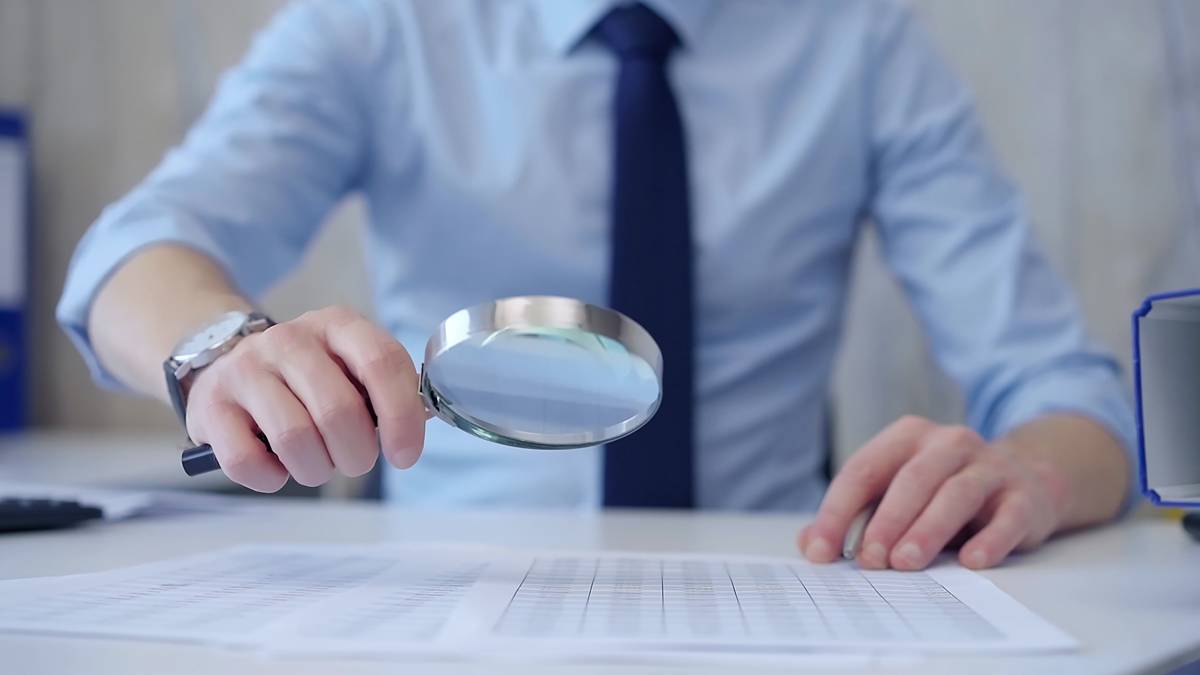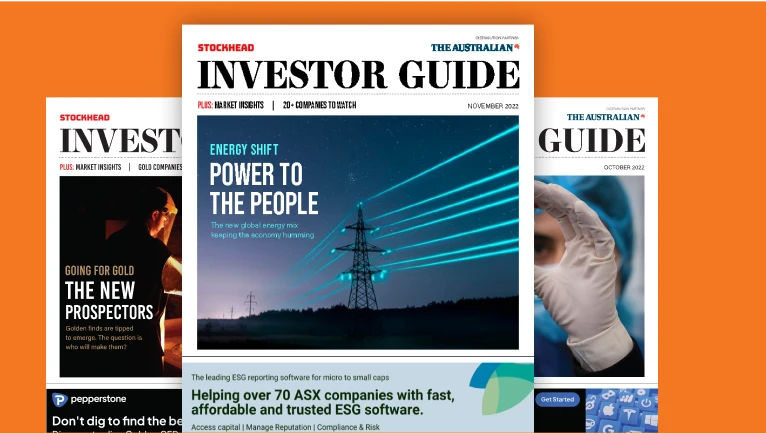Scott Power: ASX health stocks up in ‘reasonable start’ to reporting season

Reporting season zooms in on ASX healthcare’s hits and misses. Pic via Getty Images
- ASX heath sector up 2.33% over past five days, while broader markets rose 1.2%
- Avita downgrades FY25 guidance and announces $23 million capital raise
- ‘Materially undervalued’ CSL due to report FY25 results next week
Healthcare and life sciences expert Scott Power, who has been a senior analyst with Morgans Financial for 27 years, gives his take on the ASX healthcare sector for the week and his ‘Powerplay’ stock pick.
The ASX Health Care Index (ASX:XHJ) has risen 2.33% for the past five days, beating the benchmark S&P/ASX 200 (ASX:XJO) up 1.2% for the same period in what Morgans’ senior healthcare analyst Scott Power has described as a “reasonable start” to reporting season.
In the large caps, US-focused radiology imaging house Pro Medicus (ASX:PME) jumped ~6% on Thursday after releasing its FY25 results, which co-founder and CEO Dr Sam Hupert dubbed “the most successful year in the company’s history by any measure”.
Pro Medicus revenue for FY25 was up 32% to $213 million with underlying profit before tax rising 40.2% to $163.3m and net profit up 39.2% to $115.2m.
The company achieved a record year for contract wins, renewals, and additional module sales. Cash and financial assets grew 35.5% to $210.7m, with ProMedicus remaining debt-free. A fully-franked final dividend of 30 cents per share was declared.
Morgans maintains a trim rating on Pro Medicus and has raised its 12-month target price to $285 from $280. A favourite among investors Pro Medicus is trading above that target at around $315.
“Pro Medicus reported a result in line with our expectations and the share price responded positively up with strong earnings growth forecast for FY26,” Power said.
However, investors in Cochlear (ASX:COH) weren’t tuning in to quite as positive news. The global hearing implant leader’s FY25 results released today came in below expectations and its price fell ~2%.
Cochlear reported FY25 NPAT of $392m, which was slightly below consensus of $400m but within recently downgraded guidance of A$390–400m.
Revenue rose 4% to $2.356 billion, also slightly under expectations. Cochlear implants sales grew 12% to 53,968 units, slightly above consensus, driven by early access to the new Nucleus Nexa system in the EU and APAC.
Developed markets grew 6%, below expectations, while emerging markets surged over 20%.
Services revenue, which accounts for ~25% of total revenue declined 9% to $609m, impacted by slower uptake of the N8 sound processor launched in 2023 with US “cost of living” pressures flagged as a factor delaying the replacement cycle.
The interim dividend was $2.15, beating forecasts. Cochlear has provided NPAT guidance of $435m to $460m for FY26, slightly below consensus of $461m with Morgans forecasting $436m.
Avita bandages up after ‘poor’ Q2 result
Dual Nasdaq-listed wounds management house Avita Medical (ASX:AVH) posted what Morgans’ healthcare analyst Iain Wilkie described as a “poor result” for Q2 CY25 and also announced a $22m capital raise.
Full-year 2025 revenue guidance was downgraded to a range of $76m to $81m compared to previous guidance of $100m to $106m, reflecting growth of ~19% to 27% over full-year 2024 revenue.
Avita revenue for Q2 CY25 of US$18.4m was flat QoQ, and up 21% YoY as demand for its flagship spray-on skin treatment Recell fell ~20% due to unresolved reimbursement issues with medicare administrative contractors (MACs) in the US.
Net loss for Q2 improved to US$9.9m, down from US$15.4m on pcp but according to Wilkie was “still insufficient to ease near-term cash flow concerns”.
In a note to clients Wilkie wrote Avita must deliver US$20m per quarter in H2 CY25 to meet the lower end of guidance. Profitability timelines have now also been pushed, with cash flow breakeven expected in Q2 CY26 and GAAP profitability expected in Q3 26, both delayed by one year.
“A poor result, and [it] confirms a structural delay in its breakeven trajectory, but we don’t see this as a structural derailment,” he wrote.
“Commentary around resolutions made in July as Medicare contractors initiate pricing and payments is a good sign this is reversing.
“Still, hard for investors to stomach yet another downgrade to guidance.
He said the key takeaway with Avita’s latest results was the US payor system was complicated.
Meanwhile, answering concerns about its balance sheet Avita announced on Wednesday a $23m equity raising, by way of a private placement at $1.32 per share, an 11% discount on the previous close.
Although capital raising often drags on a share price, Avita’s stock jumped as much as 13% as investors welcomed the added breathing room.
Morgans maintains a speculative buy on Avita but has downgraded its 12-month price target from $3.78 to $2.
EBR’s WiSE finds its rhythm with early sales
Developer of the WiSE CRT System – the world’s only leadless solution for pacing the left side of the heart, EBR Systems (ASX:EBR) has released its Q2 CY25 results, which was largely in line with expectations – per Morgans healthcare analyst Derek Jellinek in a note to clients.
Cash burn was down US$2m to US$11.5m, mainly on lower R&D spend with US$87m cash on hand, which Jellinek wrote was adequate funding for more than seven quarters at the current rate.
“Notably, June saw ~US$150k in first commercial sales from three WiSE CRT devices across two leading US hospitals, with favourable physician and patient feedback increasing despite no reimbursement, which is still expected later this year,” Jellinek wrote.
“We continue to view the phased US commercial rollout, with limited market release in Q4 CY25 followed by full commercial launch in CY26, as prudent, balancing adoption with execution quality.”
EBR was granted US Food and Drug Administration (FDA) approval for the launch of its Wise CRT system in the US in April. Morgans maintains a buy rating on EBR with a 12-month price target of $2.86.
Tetratherix gets government grant for manufacturing facility
Newly locally listed wound management company Tetratherix (ASX:TTX) has been awarded $3.3m non-dilutive grant from the Australian government’s Industry Growth Program to co-fund its manufacturing facility expansion.
The funding will be spread across FY26 and FY27 with Tetratherix contributing to the balance of $4m. Following its ASX debut on June 30, the company allocated $10.2m from its IPO funds for manufacturing expansion.
The expanded manufacturing will enable the supply of product for the bone regeneration franchise which is on target for US FDA clearance in H2 CY 26.
Power said other upcoming catalysts for Tetratherix include a master service agreement executed with an orthopaedic company expected in H1 CY26. An update on recruitment in a pivotal trial for cohort two using its tissue healing product TetraDerm involving surgical incisions in face/neck is also expected also in the H1 CY26.
“Its clearly positive news for Tetratherix and we will assume that the saving in manufacturing will be re-allocated to funding other franchises including bone regeneration, tissue spacing, tissue healing,” Power said.
“TTX’s share price is up over 40% since the IPO and we expect the cadence of news flow to maintain investor interest over the coming quarters.”
Power’s Powerplay: ‘Materially undervalued’ CSL to report FY25 results
The ASX’s largest healthcare company, CSL (ASX:CSL) is Power’s pick of the week, with the blood products giant due to report its FY25 results next Tuesday.
In a July note to clients Power’s colleague Jellinek wrote that CSL was currently trading at levels significantly below fair value, pricing it as less than a single-division company, with the main Behring division alone justifying a higher valuation and no value assigned to either Seqirus or Vifor.
Morgans “view CSL as materially undervalued” and over the past decade the company had averaged an EV/EBIT multiple of 24.7 times but today it sits at 18.2 times.
Strong demand and cost-cutting measures have helped margins recover for CSL Behring, which focuses on rare and serious diseases such as bleeding and immune disorders and made up more than 70% of earnings.
Morgans noted CSL’s flu vaccines business Seqirus faced short-term uncertainty around vaccine uptake and the impact of vaccine skeptic Robert F Kennedy Jr’s position as Health secretary, but demand was still supported by pandemic contracts.
Growth in CSL’s iron deficiency and kidney care business Vifor, while slower than expected was also showing signs of improvement.
“Combined, we estimate an intrinsic value of $196 bn, representing c35% upside from current trading levels,” Jellinek wrote.
Morgans has a buy rating on CSL and 12-month target price of $303.70.
The views, information, or opinions expressed in the interview in this article are solely those of the interviewee and do not represent the views of Stockhead.
Stockhead has not provided, endorsed or otherwise assumed responsibility for any financial product advice contained in this article.
At Stockhead, we tell it like it is. While EBR Systems is a Stockhead advertiser, the company did not sponsor this article.
Disclosure: The author held shares in CSL at the time of writing.

UNLOCK INSIGHTS
Discover the untold stories of emerging ASX stocks.
Daily news and expert analysis, it's free to subscribe.
By proceeding, you confirm you understand that we handle personal information in accordance with our Privacy Policy.








